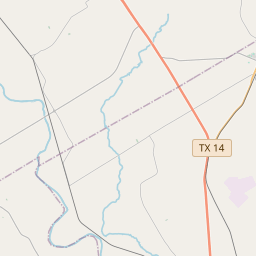Walnut Creek Cemetery
Historical marker location:






The Walnut Creek community was established in the 1850s with the arrival of several farming families. J. Grant Taylor came as a child to this area with his parents. Tradition says the Walnut Creek Cemetery began before 1869 with the death of a two-year-old girl. She was the daughter of a horse trader who lived nearby. Taylor gave permission for the child's burial on his 30-acre tract of land. The unmarked grave is at this site under a cedar tree. The first marked grave is located under the same cedar tree and is that of Sarah Lane Johnson (1866-1869), daughter of P. and S. H. Johnson.
About 1871 Taylor donated two acres for a burial ground, Union meetinghouse, and school building. Since area students attended Stump Toe School (3 mi. N), a structure was not built here until 1888.
Baptist, Church of Christ, and Methodist congregations held services here, constructing brush arbors on the grounds in the summers. Classes were held in the school building until World War II when Walnut Creek consolidated with Bremond schools. Afterward, the schoolhouse was used for annual memorial services. This cemetery is all that remains to mark the Walnut Creek community
As one of the most visible programs of the Texas Historical Commission (THC), historical markers commemorate diverse topics in Texas history, including: the history and architecture of houses, commercial and public buildings, religious congregations, and military sites; events that changed the course of local and state history; and individuals who have made lasting contributions to the state, community organizations, and businesses.
Texas is known for its love of football, and the state has produced many great football players, including legends like Tom Landry, Earl Campbell, and Vince Young.
In 1837, the Texas Congress officially established Robertson County as one of the original counties of the Republic of Texas. During this time, the county experienced rapid growth with the influx of settlers from the United States, particularly from southern states such as Tennessee, Mississippi, and Alabama. These settlers primarily relied on agriculture, with cotton becoming a major cash crop in the region.
The county also played a significant role in the Texas Revolution and the subsequent formation of the Republic of Texas. The Battle of San Jacinto, a decisive battle that secured Texas independence from Mexico, took place just outside the county's borders in April 1836. Several notable figures from Texas history, including Sam Houston, were also closely tied to Robertson County.
Over the years, Robertson County has continued to thrive, with the economy diversifying beyond agriculture. While farming and ranching still remain important industries, the county has also seen growth in manufacturing, healthcare, and tourism sectors. Today, Robertson County is known for its small towns, rural beauty, and historical sites, attracting visitors and residents alike with its charming Southern atmosphere and rich cultural heritage.
Robertson County Timeline
This timeline provides a glimpse into the major events and milestones that have shaped the history of Robertson County, Texas.
- 1837: Robertson County is established from Milam County.
- 1846: The first county seat, Springfield, is established.
- 1854: The county seat is moved to Owensville.
- 1870: The town of Calvert becomes the county seat.
- 1873: The Houston and Texas Central Railway reaches Calvert.
- 1890: The St. Louis Southwestern Railway reaches Hearne.
- 1925: A portion of Robertson County is used to create Falls County.
- 1942: Camp Hearne, a World War II prisoner-of-war camp, is established.
- 1987: The Hearne Southern Pacific depot is added to the National Register of Historic Places.